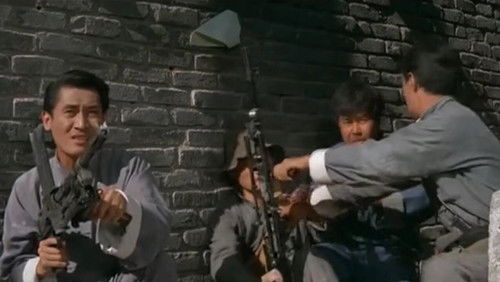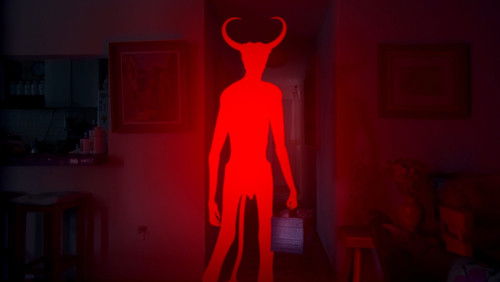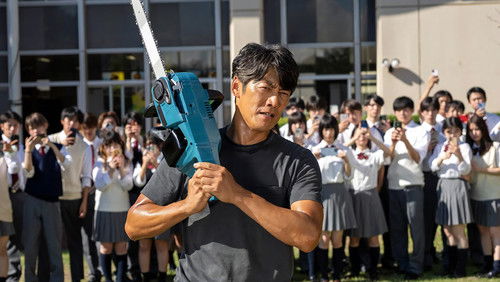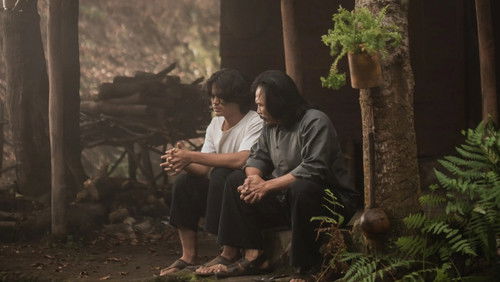Lihaportti (1964)
48KLihaportti (1964). Lihaportti: Directed by Seijun Suzuki. With Jô Shishido, Kôji Wada, Yumiko Nogawa, Tomiko Ishii. An injured thief on the run finds sanctuary within a brothel of united, ruthless women.
“The story revolves around a female prostitution clan (Komasa of Kanto) and their newest arrivals, Maya and Shintaro (Jo u0026quot;Cheek Implantsu0026quot; Shishido). It takes places in a shantytown located outside of a US military base, immediately after the end of WW2. They survive by selling their bodies and protecting each other, in other words : pimp-less. This is based on a novel by Taijiro Tamura.u003cbr/u003eu003cbr/u003eWe see the story from mostly Mayau0026#39;s perspective. When the story starts out she is a street urchin stealing food to survive. When she is caught by a local pimp and almost peddled to a couple of US servicemen, she inadvertently falls into the hands of the leader of the Komasa (the tattooed, Sen). From there the story revolves about the daily occurrences of street walking, finding food, laying about, singing and various methods of getting money, food and u0026quot;johnsu0026quot; (lots of petty pickpocketing mostly). u003cbr/u003eu003cbr/u003eThe Komasa of Kanto are identified mostly by the color of their dresses than their names. It is funny to know that the color of the dresses in correspondence with the characters did not have any significant meaning (according to Seijun). The dressed adopted those colors because initially all the dresses and styles looked nearly identical. The colors were used (in typical anime fashion) to differentiate the characters. Mino – purple ; Roku – yellow ; Sen – red ; Maya – green ; Ofuku – white and Machiko – traditional kimono. The group have a few rules, but the most important is not to give up sex for free. We are subjected to the first incident of this with Ofuku. She is tied up, her hair is cut off and she is tied naked to a row boat and left in the harbor for all to see.u003cbr/u003eu003cbr/u003eAfter Mayau0026#39;s arrival and adaptation, in comes Jo Shishido. He plays and ex Japanese soldier who goes around committing petty crimes and basically just trying to survive. His introduction is as the sole survivor of a failed raid on the military base supplies. He lives by a simple theory : eat, drink and have as much sex as you can. All the rest are pointless without these basic needs, so forget the higher ideals. He becomes part of Komasa when he stumbles into their u0026quot;homeu0026quot; after he gets shot because he stabbed a US serviceman (who was involved in the theft at the base and u0026quot;had it comingu0026quot;). There is a brief power struggle between him and Sen, but his strength and power make for a natural leader. From then on, everyone defers to him. There also is an attraction for Shishido by both Sen and Maya and the entire groups tries to appease him. u003cbr/u003eu003cbr/u003eThere are elements of the baser and basic survival instincts of man. Those few things that try to elevate above it are crushed and extinguished. Seijun has some personal prejudices when it comes to this movie. He actually served in the Japanese army, stationed in the Phillipines. His military career started and ending with the Japanese retreating. At the time he still felt a bit angry at the US. This is represented in many fashions throughout the movie : the US GI rape of Maya, the MPu0026#39;s not caring, soup/ramen with a condom in it (merchant calls it healthy and nutritious food) and the appearance of the American flag. The flag is used every time something bad happens. It only has negative connotations, especially at the end where it is the last thing we see as the camera pans over the town. There also seems to be some mild capitalist vs communist debate going. At one instant one can hear the song of the international communist brotherhood being sung over all the dealings.u003cbr/u003eu003cbr/u003eThe movie is quite visually stunning. Takeo Kimura (the production designer) designed the sets. He was quite limited with funds. The movie need good sets but they were working with a B-movie budget. He used his theater background to create non-realistic surreal sets (theatre-like). They bring the movie (along with the costumes) to life. It gives the entire movie a theatrical feel. The bridge was even built with stolen used plywood from the props department. To make the paint go a long way, they would dilute the paint with water and add saw dust for thickening. This isnu0026#39;t a documentary. It is not suppose to emulate real life. It is an extreme look at life. Extreme characters in extreme circumstances. The movie also contains numerous scenes of nudity, female on female beatings, numerous sex scenes, plenty of violence and the butchering of a cow (which looks way too life-like). What more can one expect from the grandfather of the exploitation genre ?? Iu0026#39;ve seen numerous of Seijunu0026#39;s movies prior to this (the most recent being the Beast of Youth), but I was not expecting such a great movie. The Japanese cast and main actors do an excellent job. By the end you really care what happens to them. Seijun also included many Americanu0026#39;s in the cast as well, so expect to hear some English in the movie. I canu0026#39;t say enough about this movie. What are you still doing reading this, go out and see it for yourself.u003cbr/u003eu003cbr/u003e-Celluloid Rehab”









